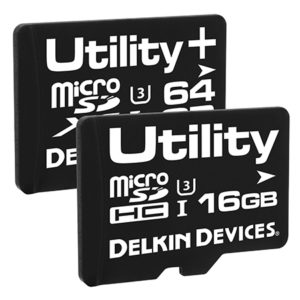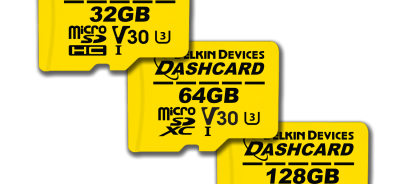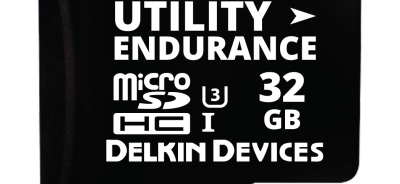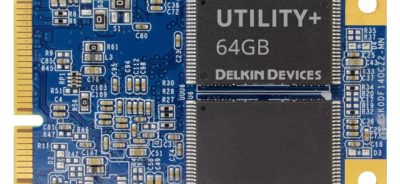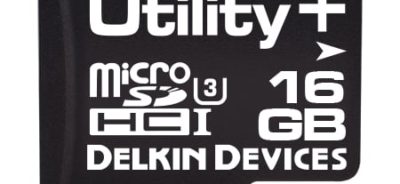Bringing Reliability, Capacity, and Speed Together in a microSD Card
MicroSD cards—the smaller version of traditional SD cards designed for small devices—are a popular choice for flash memory in both consumer devices, like smartphones, and in industrial applications. Since the introduction of the microSD card, this storage format has evolved alongside the technologies it supports. These cards offer ever-increasing speeds and capacities, along with the kind of reliability that makes them viable for industrial users. Today, you can get a microSD card with 128GB capacity. This is 1,000 times greater storage capacity than what was available just 10 years ago.
According to the Secure Digital (SD) Association, the microSD card will continue to evolve to remain viable and relevant. The SD Association is the group responsible for all of the design decisions and specifications for all SD cards. It is made up of developers and component manufacturers. These individuals are on the frontlines of technological advancements and well positioned to ensure that microSD cards continue to meet the reliability, capacity, and speed demands of the market.
Which markets are driving the change?
The demand for microSD cards is being driven by mobile devices that need small but powerful storage. In the consumer market, smartphones are the biggest drivers. Although Apple iPhones do not have a slot for microSD cards, Samsung and most other smartphone manufacturers do include this feature. Many of these manufacturers have reduced the amount of internal storage available in their smartphone devices in order to keep costs down. As a result, customers often choose to supplement their phone’s internal storage with microSD cards. Consumers tend to look for cards with high capacities, driving the need for the SD Association to provide new guidelines for higher capacity cards.
For industrial users of microSD cards, the drive is different. Industrial users quickly adopted microSD cards as reliable options for embedded memory because of their small size and easy compatibility. However, industrial microSD card users have different needs than most consumers. They need microSD cards that can provide extended temperature ranges, upgraded data security, and the ability to operate in conditions with high levels of shock and vibration. Industrial users need all of these features to be combined with high-speed operation and plenty of capacity in a memory card that can fit into a compact space. The complex demands of the industrial market have propelled advances in microSD cards designed to meet these specific needs.
How does flash memory impact microSD card performance?
All SD cards—in fact, all solid state storage devices—are designed around one particular technology: NAND flash memory. NAND flash memory is built with floating gate processes, and all manufacturers support that design. As microSD cards developed, the horizontal line width in the lithography of NAND memory design decreased dramatically, from 110 nm to 19 nm. This has allowed developers to dramatically increase the storage capacity of NAND flash memory chips without increasing their size, which has made significant capacity increases possible for microSD cards.
Another development that is underway for NAND flash memory is the potential to vertically stack NAND memory chips. To create stackable chips, the existing chips must be made as thin as possible. This would allow them to be stacked without increasing the size of the memory card itself. Stacked chips mean more storage, so when the technology is ready for mass production, the storage capacity of microSD cards could increase dramatically. Having stacked chips does mean that there is a greater risk of errors occurring, so these cards should also have embedded error correction technologies.
For industrial users, the grade of NAND flash memory also matters. SLC, or single-level cell, NAND flash memory is considered to be the gold standard for industrial applications. With this type of flash memory, only a single bit of data is stored per cell. Storing one bit of data on each cell drastically reduces the risk of data loss due to errors during write operations. It also increases the speed of the memory card, which is significant for industrial users. Industrial microSD card users occasionally opt for MLC—multi-level cell—NAND flash memory, which stores two bits of data per cell and thus offers greater capacity. Stacked chips in vertical NAND flash memory would help these users avoid the need for MLC storage.
How have microSD card manufacturers increased speed?
The speed increases in microSD cards that have occurred alongside the capacity increases have been achieved through both hardware and software changes. Developers created a new interface with a second row of pins to boost connectivity. At the same time, a new filing system has also allowed for faster reading and writing speeds. High-speed microSD cards with the latest interface can read at speeds of up to 312mbps. That is up from the previous top speed of 104mbps.
Additionally, the flash memory controller can also play a part in speed increases. The controller is responsible for managing the NAND memory and helping it connect to the device in which it sits. Controllers in high-speed microSD cards use a few different strategies to allow the NAND management and connection to the outside world to happen at the same time. These strategies include using multiple channels at once and interleaving data. As previously stated, the grade of the NAND flash will also impact its speed. SLC flash memory is the fastest, even with the new developments. Having one bit of data per cell requires fewer operations during both write and read cycles, so this advantage follows SLC flash memory with each speed upgrade.
If you are looking for embedded memory for rugged operating environments, contact Delkin. We specialize in industrial grade microSD cards and other embedded memory options for applications in industries ranging from healthcare to travel to automation. Our team will work with you to find the best memory solutions for your unique needs. In addition, we offer a long list of customizations to help you maximize the efficiency of your design. For more information about microSD cards and other industrial flash memory options, reach out to our team today.
ORDER DELKIN INDUSTRIAL FLASH STORAGE TODAY through our distribution partner Newark.
For Europe Contact Our Partner Farnell
 Login
Login Register
Register


